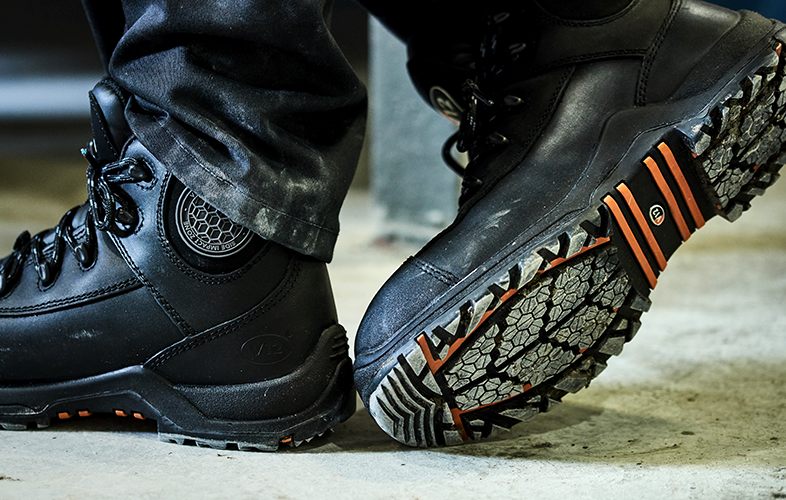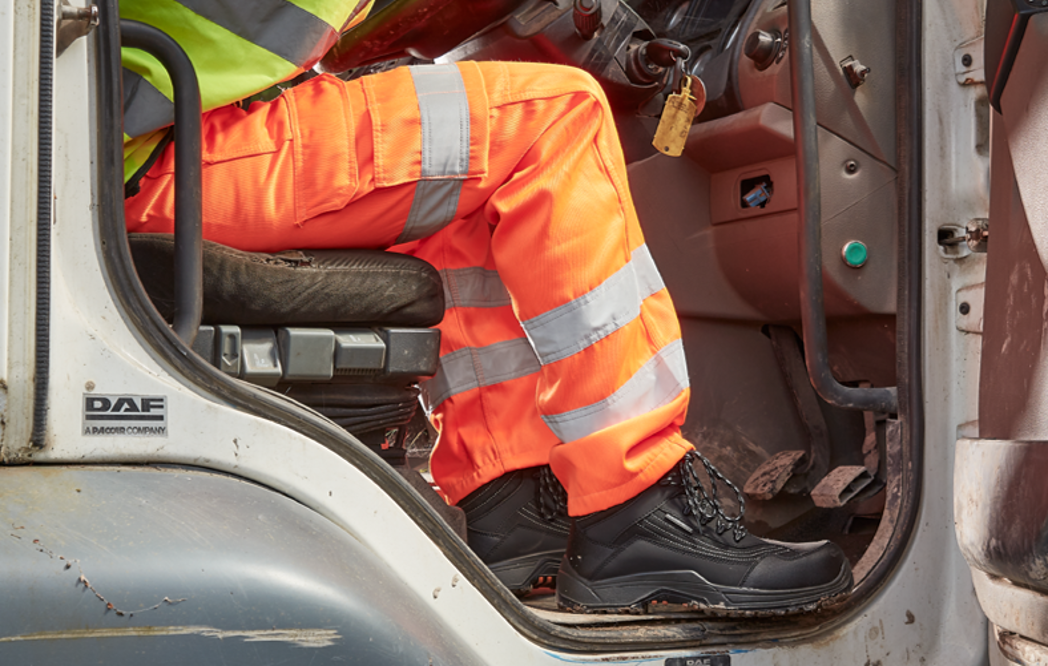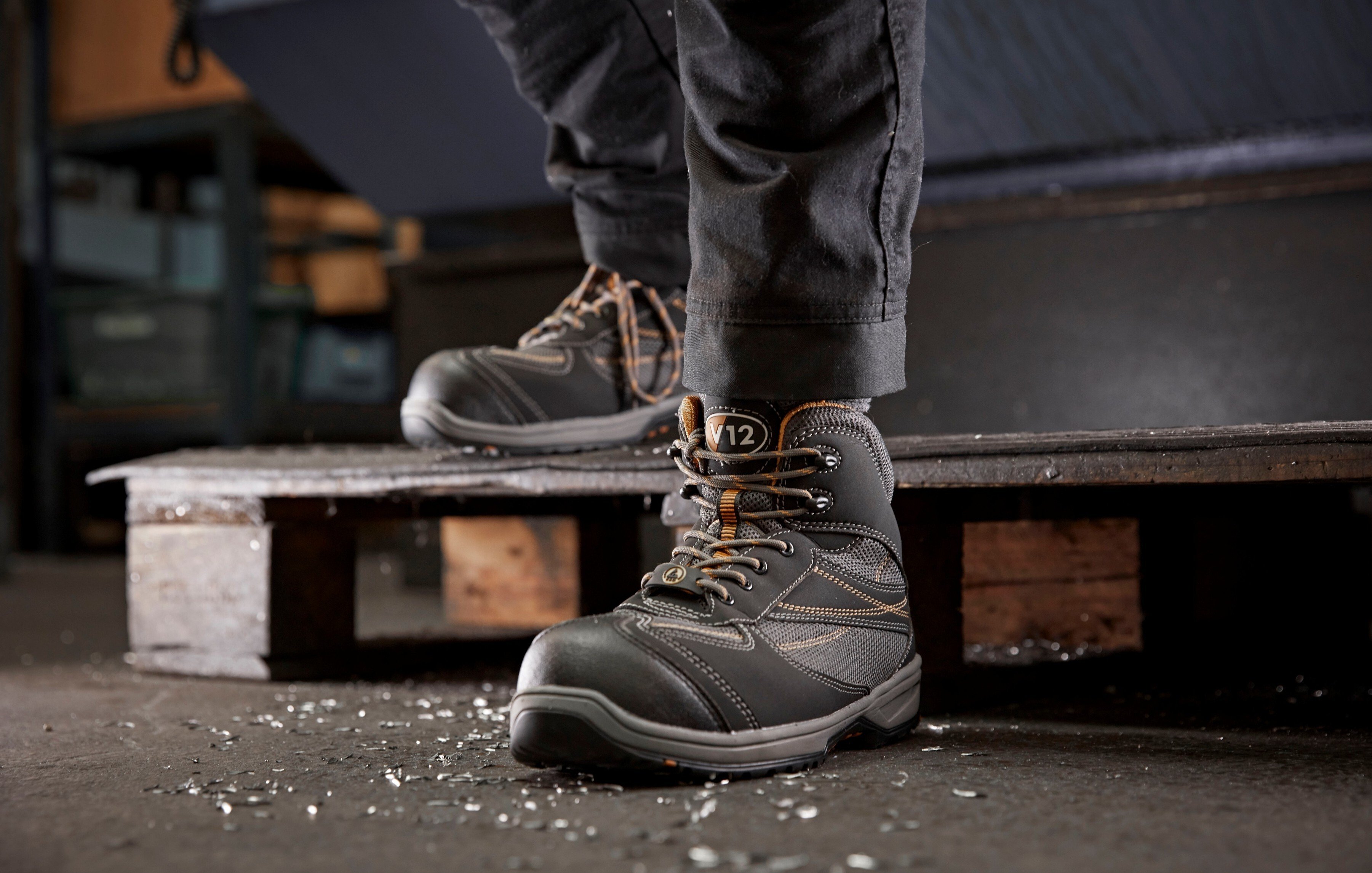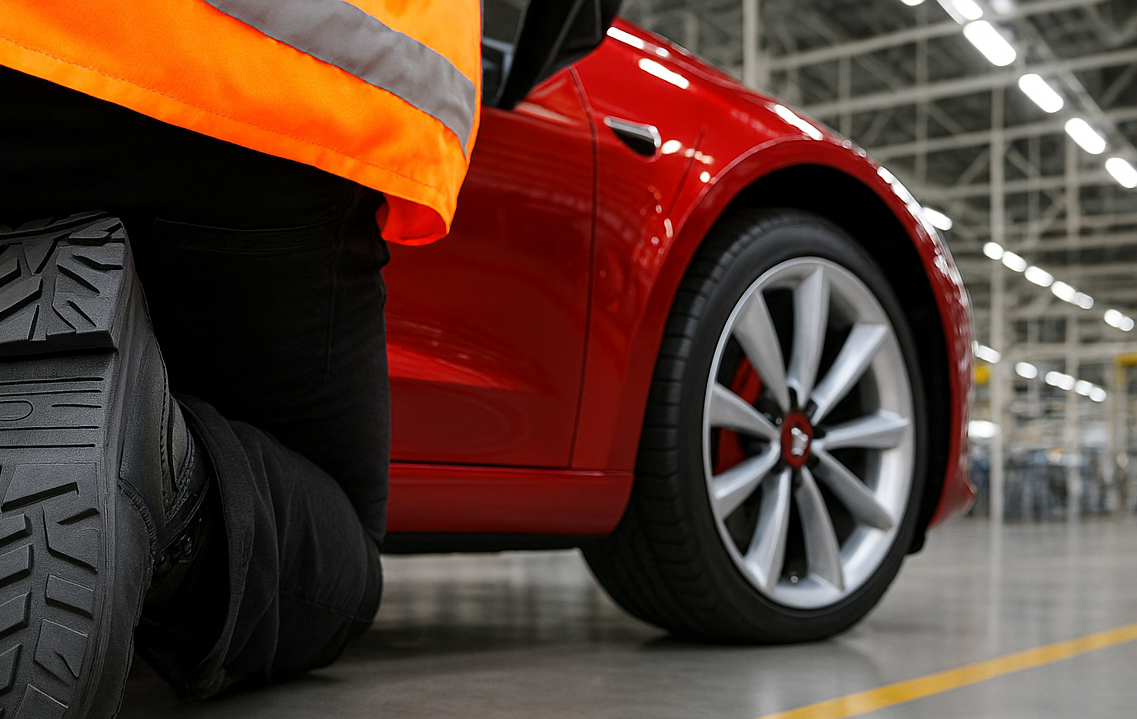There have been significant changes to safety footwear standards including updates to classifications, testing and markings. In this blog, we focus on an area arguably most affected by the EN ISO 20345:2022 updates - slip resistance.
If you are responsible for Health and Safety at your organisation, it's crucial that you're familiar with the updated slip-resistance information. This knowledge will play a vital role when specifying and requesting non-slip safety boots from your suppliers, as it will enable you to clearly identify the specific footwear you require to enhance the stability and safety of your team.
But before we get any further, let’s think about why slip testing is so crucial for footwear in the workplace.
WHY IS SLIP RESISTANCE TESTING IMPORTANT?
The answer is an unfortunately simple one. Slips are the most common non-fatal workplace accident, accounting for over a third of all recorded accidents. Furthermore, 95% of major slips result in broken bones, which causes significant distress and time off for victims, but for employers, it can have a serious impact on performance and productivity.
The average slip leads to 8.5 lost days of work (a period which according to Safety Mats generates an average total cost of £19,000) and the HSE have calculated that the absence created by slip accidents costs employers on average more than £500 million per year.
If you want to find out more about the causes and cost of workplace slips for an employer, head to this blog.
WHY HAVE SLIP-RESISTANCE STANDARDS CHANGED?
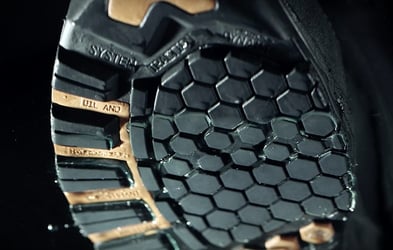 The safety standards have changed for a number of reasons, but the overarching aim of the update is, given the alarmingly high figures above, to make things safer.
The safety standards have changed for a number of reasons, but the overarching aim of the update is, given the alarmingly high figures above, to make things safer.
It is hoped that the changes will mean:
- Slip-testing will be a more precise and accurate process
- Slip-safety testing will reflect conditions that are more realistic or 'real-world'
- Markings on safety footwear will be clearer and lead to less confusion
OLD SLIP RESISTANCE STANDARDS
In the old EN ISO 20345:2011 standards, safety footwear was awarded a slip rating of either SRA, SRB or SRC based on its grip performance on particular treated surfaces. This standard of grip is called the ‘friction coefficient.’
SRA. Footwear is given this rating if it passes the friction coefficient standard on a soapy ceramic tile surface.
SRB. Footwear is given this rating if it passes the friction coefficient standard on an oily steel surface.
SRC. The highest slip resistance rating a shoe or boot can get, footwear is given this rating if it passes both SRA and SRB tests.
WHAT’S CHANGED?
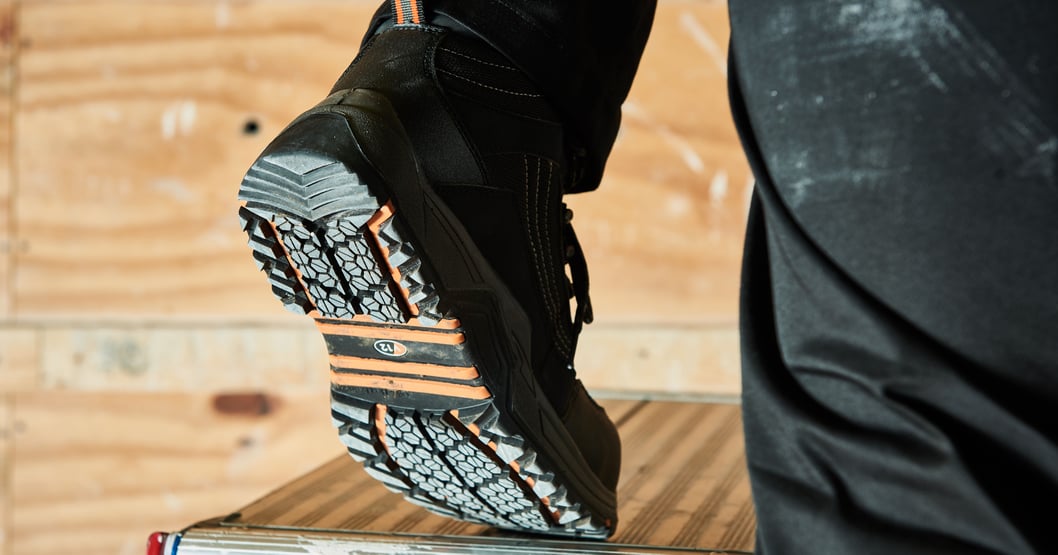
MARKINGS
The old slip resistance markings of ‘SRA’, ‘SRB’ and ‘SRC’ have been removed in the new standards. Because slip resistance is considered such a crucial feature of general safety footwear (remember the slip accident stats at the start of this piece), it is now considered mandatory and so will not carry a mark.
There is an option for manufacturers to carry out an additional slip test which if passed will allow footwear to be marked with an ‘SR.’
SURFACE
Slip resistance testing will no longer feature a steel surface – both the mandatory and optional SR tests will be conducted on a ceramic tile surface. However, the contaminant solution has changed: The mandatory test will use sodium lauryl sulphate, while the optional ‘SR’ slip test lubricant will be glycerine.
AREA
A final change is around the area of the footwear that's tested. Instead of the flat of the shoe or boot, the heel and forepart will now be the area tested.
.png?width=472&height=300&name=Ladder%20Grips%20(HSM).png) LADDER GRIPS
LADDER GRIPS
This new marking code is taken from the firefighter standard (EN 15090) and will be indicated by the symbol ‘LG’ to show that the boots' sole tread engages with ladder rungs for extra grip and stability when working at height.
It's worth pointing out that many V12 footwear users have already experienced the advantages of this type of grip on our products, as our IGS and STS sole units have included ladder grips that meet firefighter standards since 2016.
YOUR DUTY AS AN EMPLOYER
It is the employer's legal duty to ensure staff are given sufficient protection from the hazards of their workplace, so you have a responsibility to make sure if there are slip risks present, the boots you've made available have shown they can provide the right grip and traction to maximise your team's safety.
IF YOU'RE A SAFETY DISTRIBUTOR
If you provide safety footwear to an organisation, it is crucial for you to stay updated on the latest slip resistance testing and coding. This knowledge will help you guide your customers to keep their team safe as well as ensure the information in their tender documents or catalogues are up to date.
WE CAN HELP
If you need guidance on reducing slip hazards in your workplace or getting the right type of non-slip safety boots for your workforce, we can help. Using our passion and expertise, we've worked with companies across many industries for 25 years to help reduce their workplace accidents and advise them on the most appropriate safety footwear, so get in touch: we'll take you from slip to grip in no time.

